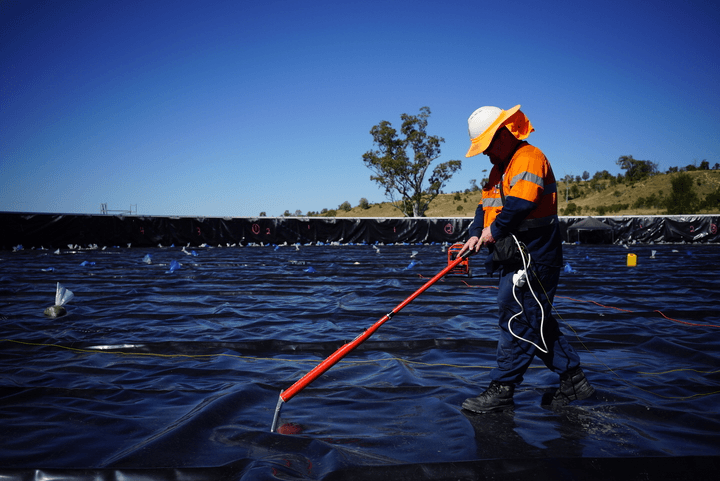Jun 21 2017

Image Credits: Imagine Intelligent Materials
According to McKinsey, by 2025 the Internet of Things will contribute up to $US11 trillion in economic value globally. The value of the “Factories and Worksites” component together will be worth almost US$4 trillion.
The Internet of Industrial Materials conference will focus on how Australian manufacturers, researchers and investors can be big winners by focussing on the Factories and Worksites market segments. Advanced materials that use funtionalised graphene - a revolutionary carbonallotrope - to capture and communicate useful data will enable the manufacture of products and processes that will differentiate and deliver value into global supply chains.
Imagine Intelligent Materials is the lead industry partner with Swinburne University in a worldfirst research initiative: The Graphene Supply Chain CRC-P. This research centre will be officially opened on August 17th in parallel with the conference. This research initiative is devoted to determining how to ensure replicability of graphene based materials, together with the quality assurance that will be necessary for graphene to deliver value in large scale manufacturing environments.
The conference at Swinburne will present the way that the commercial benefits of graphene can be realised now and will include up to date case studies of applications that demonstrate how graphene can function as a cost-competitive component in the development of Internet of Things applications and technologies.
The scope of the immediate opportunities is massive, and includes:
- Delivery of leak detection in dams and containment ponds (important in coal seam gas mining)
- Structural integrity reporting in mine walls (important for safety in underground mining)
- Sensing traffic movements through smart roads
- Fabric sensors and switches for smart cars
- Ultimately smart textiles for medical health, clothing, and homes.
“The path to economic prosperity for a nation is tied to its manufacturing sector” notes a recent Deloitte report for the World Economic Forum. “The more advanced the manufacturing processes employed – the greater the prosperity of the nation.”

Image Credits: Imagine Intelligent Materials
The Internet of Industrial Materials conference will highlight how Australian companies are already working with global companies and supply chains and how understanding these factors can give Australian manufacturers, investors, researchers and entrepreneurs an “unfair” advantage.
Attendees will be presented with a singluar vision: how Australia has an opportunity to become a major beneficiary of the IoT megatrends by focusing on a sector of IoT that leverages its existing strengths. This has the potential to supercharge Australia’s economy and create the jobs and industries of tomorrow starting today. The participants in the influencers, policymakers, entrepreneurs, companies from resources, infrastructure, and chemicals industries, as well as researchers and investors.
Examples to be presented will include two successful installations, totalling over 10,000 square metres, of geotextiles coated with graphene-based imgne® X3 product made by Geofabrics Australasia (Australia’s largest textile manufacturing company) This product enables electronic detection of holes as small as 1 mm used to line a coal seam gas evaporation pond to help ensure that toxic materials are not able to pollute ground water and aquifers.
Smart materials are a critical component of Industry 4.0. Getting there requires collaborative effort between businesses, researchers and government.
Swinburne is excited to be partnered with Imagine Intelligent Materials, Austeng , Agilent, Duromer and HRL on the Graphene Supply Chain CRC-P project. Our research on understanding structure performance relationships in graphene products will help to create robust supply chains for graphene enabled products that meet industry and investor goals for manufacturability at scale. The applied research work on smart materials is totally aligned with the Manufacturing Futures Research Institute, Australia’s first Institute to focus on Industry 4.0.
Professor Bronwyn Fox, Director of the Factory of the Future, Swinburne University
The elite conference will bring together thought leaders from industry and the research community to secure Australia’s role in the creation of new smart, engineered materials.
Brendan Swifte, Managing Director of Geofabrics Australasia, said “Geofabrics has a rich history in bringing innovative construction products through to the civil infrastructure sector, and the ability to develop smart products with capability around data, is very exciting. Our recent success utilising graphene to enable leak detection demonstrates to our customers how we continue to drive innovation in industrial textiles. There are huge numbers of sensors out there today and no doubt, more coming, but in my eyes, graphene offers a way to “jump” over the current sensor technology and have the products themselves become the sensor – enabling end users to rapidly improve productivity and safety.